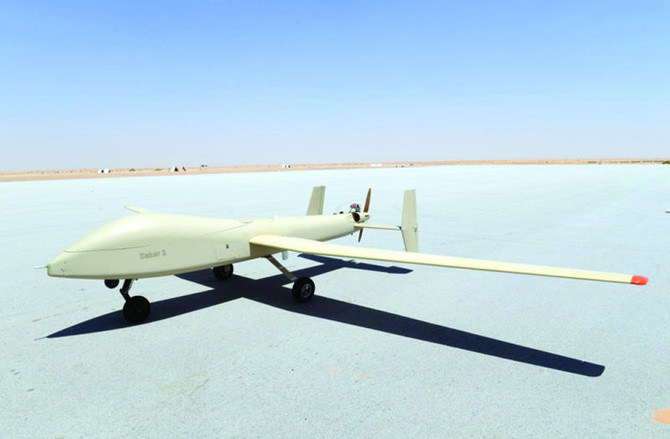
- ARAB NEWS
- 18 Jul 2025

Kateryna Kadebashy
DUBAI: King Abdulaziz City for Science and Technology (KACST) is enhancing its home-grown unmanned-aerial-vehicles (UAVs) — Saker-1 and Saker-4.
The medium-altitude and long-endurance drone Saker-1 has already achieved good results in preliminary tests.
It “managed to carry … up to 150 kg, managed to fly up to 15,000 ft (4.6 km) … fired a missile and a bomb with a range of 6 km,” Dr. Ali Al-Shihri, manager of the National Center for Aeronautical Technology at KACST, told Arab News.
The drone is also equipped with an Intelligence, Surveillance, Reconnaissance (ISR) system and can live stream videos during shot during the day and night, with the help of infrared radiation sensors.
Saker-4 is a smaller model of UAVs.
It is “capable of carrying about 3 kg of surveillance systems, and managed to fly up to 11,000 ft (3.6km) and reach a speed of about 120 km per hour,” Al-Shihri said.
Composite materials — such as glass fibers, carbon fibers, resin and fiber-reinforced composites — are used to create the UAVs. This decreases the weight of the devices, saves energy and prolongs flying time.
KACST is a research and development facility in Saudi Arabia that aims to employ scientific research in the development of new technologies and push them into industrial development.
Weaponized UAVs “are sensitive technologies, they need to go through different levels of certification, and pass the aviation and military standards — it’s a long process” until their industrialization, Al-Shihri said, adding that realizing the capability to build such technology is a big achievement in itself.
The company’s work is aligned with the aims of Vision 2030, including localizing technology, increasing local content, improving infrastructure and offering jobs for Saudis.
When it started its work in 2001-2003 it only had 10-20 employees; now there are about 120 Saudi engineers with different levels of certification working at the center.
“We are striving to recruit Saudi females,” Al-Shihri added.